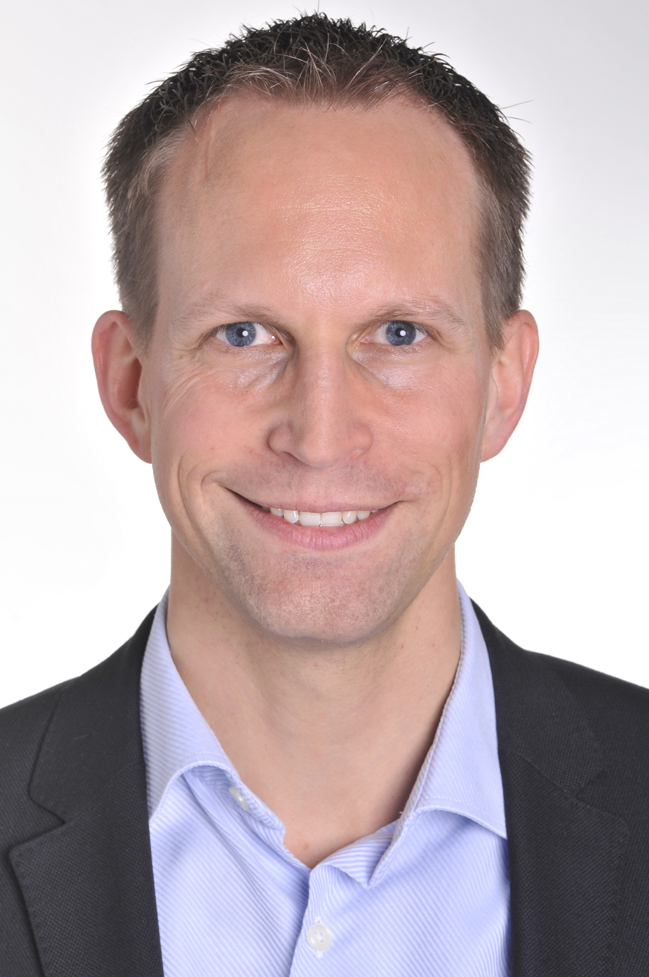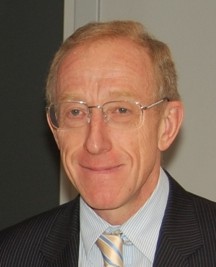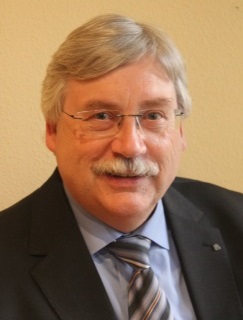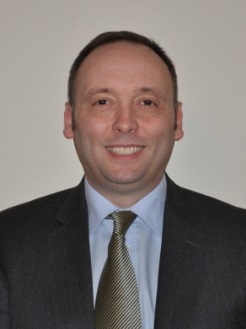Keynote Lectures
Keynote Lectures
-
- Enabling Condition Based Maintenance for Helicopters–
by Mr. Falk Hoffmann
- PHM: An Attempt at Diagnosing the Present and Prognosticating the Future-
by Dr. Pierre Dersin
- Monitoring of Wind Energy Plants — Challenges and State of the Art-
by Dr. Claus-Peter Fritzen and Dr. Peter Kraemer
- Enabling Condition Based Maintenance for Helicopters–
The Keynote Lecture session is tagged as a keystone event of PHME14. In this session, experts from different domains provide new insights on the pervasive use of health management methods and technologies. In PHME14, the Keynote Lecture session will take place on Wednesday, July 9 morning. These lectures are intended not only to highlight the inter-disciplinary aspect of health management, but also promote an interchange of ideas that span diverse application domains.
| Wednesday, July 9, 2014 | 08h30–10h00 | |
|---|---|---|
| 08h30–08h35 | Session Introduction | |
| 08h35–09h00 | Mr. Falk Hoffmann Airbus Helicopters Deutschland GmbH | |
Enabling Condition Based Maintenance for HelicoptersAbstract: Health and Usage Monitoring Systems (HUMS) for rotorcraft have been available since the early 1990s. The potential benefits of installing HUMS and transitioning towards Condition Based Maintenance (CBM), such as enhanced operating safety, increased availability, and reduced Direct Operating Costs (DOC) have been widely discussed, and their realization has been the subject of many research projects and operational trials in the past years. While HUMS installation and utilization has recently surged in the military environment, commercial applications have progressed at a much slower rate. Presently, HUMS are installed almost exclusively by operators in the Oil & Gas industry, to meet regulatory requirements that practically apply specifically to this industry. However, today there is a rising request coming also from other civil helicopter operators to exploit the full potential of HUMS. Helicopter manufacturers, like Airbus Helicopters, now have the challenging task to answer these demands with suitable HUMS and novel maintenance strategies that take advantage of condition and usage monitoring technologies. To ensure the success of HUMS services, the specific needs of the end users must thoroughly be taken into account, which is the main difficulty due to the diversity of customers and their expectations towards the usage of helicopters. One of the main challenges in promoting Condition Based Maintenance lies in providing a cost-benefit justification. As the extent of the benefits is very difficult to predict in advance, a more generic and qualitative assessment must be established. The keynote lecture will review the challenges that are faced in the application of HUMS and services built around such systems and will provide some answers and perspectives to next generation systems.
|
||
| 09h00–09h05 | Session Introduction | |
| 09h05–09h30 | Dr. Pierre Dersin ALSTOM Transport Information Solutions | |
PHM: An Attempt at Diagnosing the Present and Prognosticating the FutureAbstract: An attempt will be made at taking a look at the current state of the art of PHM and venturing some guesses as to where the discipline is headed; some modest suggestions will be offered. The following issues will be addressed, or at least evoked, with a goal to stimulating discussion.
He worked on reliability of large electric power networks, as part of the Large Scale System Effectiveness Analysis Program sponsored by the US Department of Energy, from MIT and Systems Control Inc. and later joined FABRICOM (Belgium and U.S), where he was involved with fault diagnostic systems for factory automation, from 1983 to 1999. Since 1990 with ALSTOM Transport, he has occupied several positions, mainly involved with RAMS and Maintenance, including R&D Manager of the Service business since 1999, and, since 2007, RAM (Reliability-Availability-Maintainability) Director at ALSTOM Transport’s Information Solutions, i.e. railway signalling and communication, product line. Also, he is a Leader of ALSTOM Transport’s Reliability & Availability Core Competence Network, and since April 2014, a co-Director of the joint ALSTOM-INRIA Research Laboratory for digital technologies applied to mobility and energy. He has several publications in IEEE conferences and journals (including the 2008, 2009, 2010, 2011, 2012 and 2014 RAMS Symposia, and MMR 2009) in the fields of RAMS, automatic control, and electric power systems. He was the chairman of UNIFE’s (Union of European Railways Manufacturers) LCC/RAM working group in 1998-2001. He is an associate editor of the International Journal of Performability Engineering, and has acted as a reviewer for several professional journals, such as Reliability Engineering & System Safety. He is a member of the IEEE Reliability Society’s Advisory Committee and IEEE Industry Advisory Board. |
||
| 09h30–09h35 | Session Introduction | |
| 09h05–09h30 | Dr. Claus-Peter Fritzen University of Siegen, Department of Mechanical Engineering, Germany Dr. Peter Kraemer Woelfel Beratende Ingenieure GmbH & Co. KG., Germany |
|
Monitoring of Wind Energy Plants — Challenges and State of the ArtAbstract: The technological development of wind energy plants (WEP) has made great progress during the past decades leading to larger and more powerful plants on- and offshore. However unexpected failure of components followed by drop out of energy production will lead to economic losses. An early detection of damage allows the operator to better plan necessary maintenance actions. Thus in parallel to the development of the WEP itself the necessity to monitor the central components of the plants has been recognized. Therefore monitoring systems are considered to play an important role to provide higher reliability of the energy production. Recently, another aspect came into the focus: older plants reach their approved lifetime of e.g. 20 years and the question arises how to prolong the lifetime and how to provide further safe operation? The first monitoring systems for WEPs were related to operational data like wind speed, pitch angle, etc. as well as to the drive train components. These were supervised by means of condition monitoring systems (CMS). The CM-methods and systems for WEP have reached industrial standards today. These are described in CMS norms and guide lines and they found a broad acceptance in the industry. The rapid growth of WEP installations over the world, especially of expensive WEPs with more than 3MW, since the year 2000 until now, brings the need of Structural Health Monitoring (SHM) of WEPs into the discussion. The idea was firstly welcomed with enthusiasm and different approaches transferred from civil and aeronautical engineering were originally adapted to monitor WEPs. The application of these approaches with the necessary measurement equipment to real WEPs during the last years have demonstrated interesting possibilities, but also their limitations and open challenges in the real field. Today the acceptance of WEP-SHM-Systems in the industry seems to be constricted, also the development of norms and guidelines on this sector progresses slowly. The reason for this current moderate acceptance is based in the higher investment on one side and the limited long-term robustness of the sensor systems and to some extent an insufficient significance of the delivered information regarding damage location and severity on the other side. Moreover uncertainties and tolerances in the manufacturing and design and the deeper understanding of possible damages and their consequences additionally contributes to a lack of target-oriented developments in the field. However, the key for the development of well accepted SHM-systems in the industrial field seems to be founded in a long-term transparent and trustful cooperation between the WEP component manufacturer, wind park operator and SHM-system designer. This keynote presentation will show a short history of WEP development and the importance of the wind energy to the green energy supply today. In the following the significance of SHM and CMS for WEPs and the influences and mechanisms on their development will be explained. The main part of the presentation will deal with the state of the art in CMS and SHM of wind energy plants in the research field and in industrial application. This will be accompanied by a depiction of some recent developments, possibilities and limitations of different kinds of approaches and systems for damage identification including also systems for identification of fatigue sources. In this context an example for a successful industrial realization of an SHM–system for rotor blade monitoring will be briefly described.
|
||

 Biography: Mr. Hoffmann is currently the Head of the Health and Usage Monitoring Systems (HUMS) Department for Airbus Helicopter in Germany. Prior to his present position he worked as a Development Engineer in the Dynamics and Vibration Department of Eurocopter. In addition, Mr. Hoffmann worked as a fellow researcher at Daimler Chrysler. Between 2000 and 2007, he was part of EADS Innovation Works. Mr. Hoffmann’s primary research fields are in HUMS, Condition Based Maintenance (CBM) and active noise and vibration control. His academic publication includes 3 patents and over 16 international publications, making him an expert in the field of HUMS and CBM.
Biography: Mr. Hoffmann is currently the Head of the Health and Usage Monitoring Systems (HUMS) Department for Airbus Helicopter in Germany. Prior to his present position he worked as a Development Engineer in the Dynamics and Vibration Department of Eurocopter. In addition, Mr. Hoffmann worked as a fellow researcher at Daimler Chrysler. Between 2000 and 2007, he was part of EADS Innovation Works. Mr. Hoffmann’s primary research fields are in HUMS, Condition Based Maintenance (CBM) and active noise and vibration control. His academic publication includes 3 patents and over 16 international publications, making him an expert in the field of HUMS and CBM. Biography: Born in Belgium, Dr. Dersin obtained his Ph.D. in Electrical Engineering in 1980 from the Massachusetts Institute of Technology (MIT) after receiving a Master’s degree in O.R. in 1976, also from MIT. Before that, he obtained a BS in engineering and mathematics from Brussels.
Biography: Born in Belgium, Dr. Dersin obtained his Ph.D. in Electrical Engineering in 1980 from the Massachusetts Institute of Technology (MIT) after receiving a Master’s degree in O.R. in 1976, also from MIT. Before that, he obtained a BS in engineering and mathematics from Brussels. Biography: Dr. Claus-Peter Fritzen is a Professor of Applied Mechanics in the Department of Mechanical Engineering and currently the vice-chairman of the Center of Sensor Systems at the University of Siegen. His research interests include the development of vibration-based and wave-based methods for Structural Health Monitoring and their application in different engineering fields, such as wind energy plants, aircraft and civil structures. He is chief editor of the Intl. Journal of Structural Monitoring and Maintenance (SMM) and associate editor of the Intl. Journal of Structural Health Monitoring (SHM). In 2010 Prof. Fritzen received the SHM Person of the Year Award. He has published many papers and is coauthor of various books on SHM. He regularly teaches advanced courses together with other colleagues working in this field.
Biography: Dr. Claus-Peter Fritzen is a Professor of Applied Mechanics in the Department of Mechanical Engineering and currently the vice-chairman of the Center of Sensor Systems at the University of Siegen. His research interests include the development of vibration-based and wave-based methods for Structural Health Monitoring and their application in different engineering fields, such as wind energy plants, aircraft and civil structures. He is chief editor of the Intl. Journal of Structural Monitoring and Maintenance (SMM) and associate editor of the Intl. Journal of Structural Health Monitoring (SHM). In 2010 Prof. Fritzen received the SHM Person of the Year Award. He has published many papers and is coauthor of various books on SHM. He regularly teaches advanced courses together with other colleagues working in this field. Biography: Dr. Peter Kraemer received his PhD from the Department of Mechanical Engineering of the University of Siegen in Germany for his work on “damage diagnosis approaches for structural health and condition monitoring of offshore wind energy plants”. Presently he is working as a development engineer and designer of SHM-systems for wind energy plants with Woelfel Beratende Ingenieure GmbH & Co. KG in Hoechberg, Germany. His main activities concentrate on the development of algorithms for data and signal analysis, vibration-based online monitoring of wind energy plants and other systems such as railway vehicles, machine tools, etc.
Biography: Dr. Peter Kraemer received his PhD from the Department of Mechanical Engineering of the University of Siegen in Germany for his work on “damage diagnosis approaches for structural health and condition monitoring of offshore wind energy plants”. Presently he is working as a development engineer and designer of SHM-systems for wind energy plants with Woelfel Beratende Ingenieure GmbH & Co. KG in Hoechberg, Germany. His main activities concentrate on the development of algorithms for data and signal analysis, vibration-based online monitoring of wind energy plants and other systems such as railway vehicles, machine tools, etc.